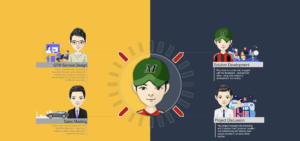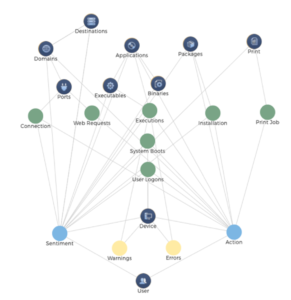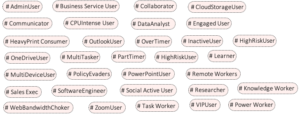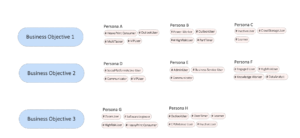Workplace DNA. Decoded!
Personalization Comes of Age
The world of work is evolving. Rapidly. Today’s employee believes in an omnipresent workplace, just like her everyday companions – Uber, Amazon, Netflix and Google. Personalized services and experiences are her new normal. Organizations are reimagining their workplaces to give employees the best personalized experience. It’s the new gold to keep employees delighted.
Enter Workplace Personas. While most organizations agree with the importance of personas, not many truly get it.

What are Workplace Personas?
No two employees are the same. Their workplace behaviours, preferences, perceptions, expectations, and job requirements differ. Each person’s workplace DNA is completely unique. It is therefore imperative to build experiences from the bottom up, starting with the individual employee.
In addition, employees’ preferences and job needs change over time. As her needs and motivations change, her behavior changes as well. It is not sufficient to define her persona based on superficial attributes which could lead to failure and negative business impact. Indeed, persona management has been in vogue for a while. But studies indicate that Workplace Persona projects often don’t succeed.

Why do Workplace Personas Fail?
Reason #1: Shallow Persona
A few years ago, Netflix uncovered some hard truths with their extensive Big Data analysis & A/B testing experiments. They deciphered conclusive evidence from the tons of user data collected over years. Todd Yellin, Netflix’s VP for Product Innovation, openly confided that demographic data (age and gender) was taking them nowhere in their quest to deliver personalized experiences. It was apparently what they do that mattered most!
As such, a 75-year-old woman may like “Breaking Bad”, a 17-year-old “Dance Moms”, and some stay-at-home moms may prefer “House of Cards” over “Chef’s Table”.
Likewise, workplace personas created in silos may not be realistic enough or deep enough to be meaningfully applied to workplace processes.
“It's not who they are in a superficial sense – like gender, age, even geography. It's not even what they tell you. It's what they do.
Todd Yellin
VP for Product innovation, Netflix
Reason #2: Static Personas
Employee personas can never be static. You cannot profile and map someone to his perfect persona and simply stop there. The moment he enters a new environment, his goals, activities and preferences change, as does his persona. Personas are as dynamic as the people they belong to. IT needs to take a continuously evolving approach, rather than a set-It-and-forget-It one.
Reason #3: One-size-fits-all Approach
Demographic-based personas can turn quite monotonous. Employee personas should help tailor internal experiences for target user groups in your workspace. The one-size-fits-all approach is not going to make your persona implementation successful.
Managing Personas – The Nexthink way
At Nexthink, we take a logical and advanced approach to persona management. Nexthink Experience collects myriad data about employee experience and converts it into actionable insights in three smart steps.

Step 1: Collect Hard Data
This includes every artifact of the digital workplace – like the device, virtual platform, applications, network connections, etc. Nexthink collects these details natively as a part of the standard data collection process.
Step 2: Collect Sentiment Data
Next, we collect user sentiment data, overall as well as on specific issues. This allows us to uncover hidden persona dimensions, and correlate sentiment with the hard data we are observing in the overall digital employee experience landscape.
Step 3: Creating Persona Dimensions
Then we convert this raw data into more meaningful intelligence based on definitions, thresholds, scoring criteria, etc. based on your business goals. Nexthink monitors and tracks these in real time; they are then recombined to generate persona traits, so you can examine the distribution of these personas in your overall end user landscape. In other words, Nexthink decodes your workplace DNA!

Evolving Personas, Evolving Workplaces
To offer the best Digital Employee Experience, your IT environment needs to adapt to employees’ changing personas.
Nexthink is built on the belief that an evolving persona dictates how the digital workplace should evolve. And when IT can proactively respond to that change, the result is a delightful employee experience.

Last Mile Challenge of the Modern Workplace – Solved!
As studies show, the last mile of the entire supply-chain adds up to about 30% of the cost! Likewise, digital experience is the last mile challenge in a modern workplace. Get your employee persona right, and you’ll set yourself up for success.
Related posts:
- The Ultimate List of Digital Employee Experience Job Titles
- IT Innovations in Personalization and End User Personas – Q&A with Prabhu Kaliaperumal
- 8 Websites Every End-User Computing Professional Needs to be Visiting Daily
- Your MS Teams Rollout Needs Specific Help—Not General Guidance